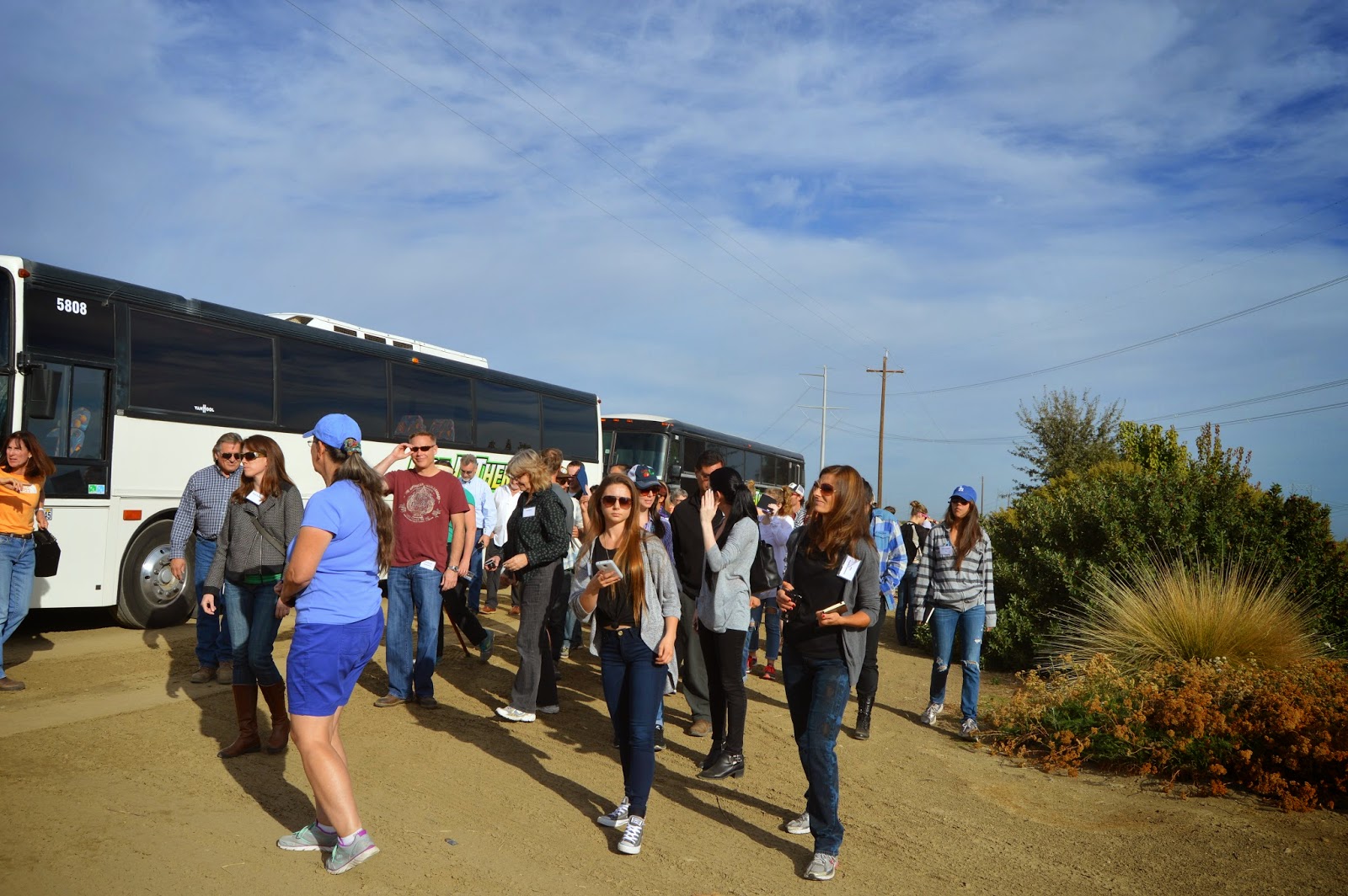 |
| Chartered buses took Cotton Tour participants to the fields. |
Every fall, dozens of
city folks put on their walking shoes and hats, slap on some sunscreen and hop
onto buses for a day-long tour our “farmside.”
The group strolled through a harvested almond orchard,
stopped by cotton fields, watched a cotton picker in action and toured a cotton
gin around the Firebaugh region of the San Joaquin Valley.
For most, it’s a first time setting foot on a cotton field. And
it’s the first time meeting a genuine farmer in the field (rather a grower
selling produce at neighborhood farmers market).
Welcome to one of the
most unique farm events in the U.S.A. – an all-day Cotton Farm Tour offered by
the Sustainable Cotton Project. The tour has remained free and open to the
public for years, thanks to support from retailers such as The North Face and
Gap Inc. and the State Water Resources Control Board.
This fall, 75 people, including a small contingent from
Japan, joined the tour. Many of the participants came from the fashion and
design industries to learn first-hand the steps of the “dirt-to-shirt”
production process.
 |
| An almond orchard captured the attention of folks. |
 |
| Visitors saw how the drought impacted a pomegranate orchard. |
They learned about
the cotton harvest, and a perennial hedgerow – arguably the largest and western
most hedgerow in the Valley, along with challenging farm issues such as water availability.
They oohed and aahed at the sight of young sequoias and redwoods thriving in
the hot Valley.
“We’re surprised the
redwoods are still alive. The Valley floor is so dry. There are giant sequoias
too,” grower Frank Williams of Windfall Farms explained during the October 30
tour.
 |
| Frank Williams (right) talks about his perennial hedgerow. |
 The eager participants jotted down notes meticulously,
snapped an endless stream of photos and picked cotton fresh off the plant. They
collected cottonseed and lint from a cotton gin. They learned one rectangular
cotton module weighs about 20,000 pounds and a round module is a one-fourth of the size of the
rectangular one. They learned bales of cotton are tagged for identification and
tracking purposes. And they learned how cotton harvesters are huge six-figure
investments.
The eager participants jotted down notes meticulously,
snapped an endless stream of photos and picked cotton fresh off the plant. They
collected cottonseed and lint from a cotton gin. They learned one rectangular
cotton module weighs about 20,000 pounds and a round module is a one-fourth of the size of the
rectangular one. They learned bales of cotton are tagged for identification and
tracking purposes. And they learned how cotton harvesters are huge six-figure
investments.
“I was impressed how
fast the ginning (process) goes. I thought it would take all day to do one bale,”
said Jessica Teitelbaum of Coyuchi, a Berkeley retailer specializing in
sustainable home furnishings. (She learned a gin can produce 20 bales of cotton
in one hour.) The tour helps “you
understand how many steps it takes and how many people it takes in cotton
production.”
 |
| Grower Doug Goodman talks about the cotton harvest. |
 |
| Getting a first-hand look at cotton picker in action. |
Brian Glueck of North Face learned close up how important
water is to agriculture after seeing a water-stressed pomegranate orchard and acres
and acres of fallow fields due to the severe drought. “It was really evident.” Takahiro
Tokiyma of the Tokyo Towel Wholesalers Association agreed: “So little water is
here.”
Cathie Colson of the Pajaro Valley Quilt Guild was surprised
by the high cost of farming – from the cost of equipment to the price for
water. “I have a better idea of the factors that influence the price of
fabric.”
Calling it an
“unforgettable experience,” participant Patty Eaton said she “learned about the
people in the Cleaner Cotton business and about the challenges of the drought,
markets and a lot of details about sustainable practices.”
 |
| Checking out Pacific Ginning Co. operation. |
Finally, one student from the Fashion Institute of Design
and Merchandising summed up the day: “to have a hands-on experience really
takes my knowledge to the next level.”
We can certainly say the Cotton Tour planted some valuable seeds
of knowledge.
No comments:
Post a Comment